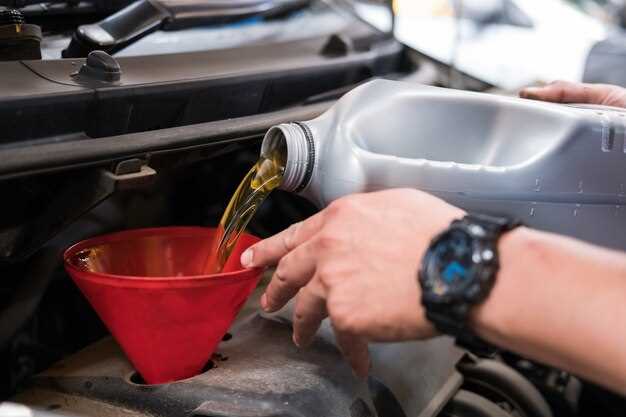
Taking proper care of your motorcycle is essential for its longevity and performance. One of the most critical maintenance tasks that every rider should prioritize is regularly checking and changing the oil. Fresh oil not only lubricates the engine but also helps to prevent overheating and wear, ensuring that your ride remains smooth and efficient.
In this article, we will guide you through the process of checking and replacing your motorcycle’s oil step by step. Whether you are a seasoned mechanic or a first-time motorcycle owner, understanding how to manage your oil effectively will enhance your riding experience and keep your bike running at its best.
By following these straightforward guidelines, you will learn how to assess your current oil levels, choose the right type of oil for your motorcycle, and perform an oil change with confidence. With regular attention to your motorcycle’s oil, you can prevent mechanical issues and enjoy the open road with peace of mind.
Identifying the Right Type of Oil for Your Motorcycle
Choosing the right oil for your motorcycle is crucial for maintaining optimal performance and longevity. Start by consulting your motorcycle’s owner manual, which provides specifications regarding the type, viscosity, and grade of oil recommended by the manufacturer. This information ensures compatibility with your engine’s design and operating conditions.
Motorcycle oils are categorized into two main types: conventional and synthetic. Conventional oil is derived from crude oil and suitable for standard operating conditions. Synthetic oil, on the other hand, is chemically engineered for enhanced performance, better protection against wear, and improved temperature stability. Selecting synthetic oil can be beneficial if you frequently ride in extreme conditions or require longer intervals between oil changes.
The viscosity of the oil is also an important factor. It is represented by a two-digit number followed by the letter ‘W’ (for winter) and another two-digit number (e.g., 10W-40). The first number indicates the oil’s performance in cold temperatures, while the second number shows its performance at high temperatures. Choose an oil viscosity that aligns with your climate and riding style for optimal protection and efficiency.
Lastly, ensure the oil meets the appropriate API (American Petroleum Institute) and JASO (Japanese Automotive Standards Organization) standards as outlined in your motorcycle’s manual. These standards guarantee the oil’s effectiveness and compatibility with your engine, helping you maintain its performance over time. Using the right oil is essential for effective lubrication, heat dissipation, and overall reliability, making it a fundamental part of motorcycle maintenance.
Step-by-Step Process for Draining and Replacing Oil

Proper maintenance of your motorcycle includes regular oil changes. Following the steps below will help you care for your motorcycle and ensure it runs smoothly.
-
Gather Necessary Tools and Materials:
- New motorcycle oil
- Oil filter
- Oil drain pan
- Wrench/socket set
- Funnel
- Shop towels or rags
- Safety goggles and gloves
-
Warm Up the Motorcycle:
Start your motorcycle and let it run for a few minutes. This warms up the oil, allowing it to drain more easily.
-
Prepare the Workspace:
Ensure the motorcycle is on a level surface. Use a sturdy stand to keep it upright during the process.
-
Drain the Old Oil:
- Locate the oil drain plug, usually found at the bottom of the engine.
- Place the oil drain pan underneath the drain plug.
- Using the wrench, carefully remove the drain plug. Be cautious as the oil may be hot.
- Allow the old oil to completely drain into the pan.
-
Replace the Oil Filter:
- Locate the oil filter, often found near the oil drain plug.
- Using an oil filter wrench, remove the old filter. Expect some oil to spill out.
- Before installing the new oil filter, apply a bit of new oil to the rubber gasket on the new filter.
- Install the new oil filter by hand, ensuring it is snug but not overly tight.
-
Refill with New Oil:
- Reinstall the drain plug securely.
- Using the funnel, pour the new motorcycle oil into the designated fill cap.
- Check the owner’s manual for the correct oil capacity and type.
- Start the engine for a minute, allowing the new oil to circulate.
- Turn off the engine and check the oil level using the dipstick. Add more oil if necessary.
-
Dispose of Old Oil and Materials:
Properly dispose of the old oil and filter at an authorized facility to protect the environment.
By following these steps, you can ensure a successful oil change, maintaining the performance and longevity of your motorcycle.
Maintaining Proper Oil Levels and Perform Regular Checks

To ensure optimal performance and longevity of your motorcycle, it is essential to maintain proper oil levels. Regular checks not only help you keep track of the oil condition but also prevent damage caused by low oil levels.
Begin by locating the oil dipstick or sight window, depending on your motorcycle model. It’s important to perform checks when the engine is cool and the bike is on a level surface to get an accurate reading. Remove the dipstick, clean it with a cloth, and reinsert it without threading. Then, remove it again to check the oil level. If the oil is below the minimum mark, you will need to add oil.
Pay attention to the oil’s appearance as well. Healthy oil should be transparent and have a golden color. If it appears dark or has a burnt smell, it’s an indication that an oil change is necessary. Regular changes at recommended intervals help maintain engine efficiency and reduce wear.
Be proactive in monitoring your motorcycle’s oil levels. Check the oil every few rides or weekly, depending on your usage. Keeping consistent tabs will ensure that your bike receives the care it deserves, ultimately leading to improved performance and reliability.
In summary, routine checks and maintaining proper oil levels are vital for your motorcycle’s health. This simple yet crucial practice can save you from costly repairs and enhance your riding experience.




